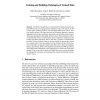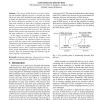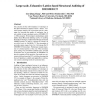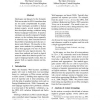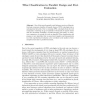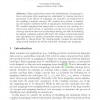SEMWEB
2010
Springer
13 years 9 months ago
2010
Springer
The Web of Linked Data is characterized by linking structured data from different sources using equivalence statements, such as owl:sameAs, as well as other types of linked propert...
SEMWEB
2010
Springer
13 years 9 months ago
2010
Springer
Abstract. Ontologies underpin the semantic web; they define the concepts and their relationships contained in a data source. An increasing number of ontologies are available on-lin...
PDPTA
2010
13 years 9 months ago
2010
Abstract-- The success of Web Services as a tool to decouple and distribute different processes is beyond any doubt. On the one hand, their distributed nature makes them perfect to...
KSEM
2010
Springer
13 years 9 months ago
2010
Springer
One criterion for the well-formedness of ontologies is that their hierarchical structure forms a lattice. Formal Concept Analysis (FCA) has been used as a technique for assessing ...
INLG
2010
Springer
13 years 9 months ago
2010
Springer
Ontologies and datasets for the Semantic Web are encoded in OWL formalisms that are not easily comprehended by people. To make ontologies accessible to human domain experts, sever...
DLOG
2010
13 years 9 months ago
2010
Abstract. One of the most frequently used inference services of description logic reasoners classifies all named classes of OWL ontologies into a subsumption hierarchy. Due to emer...
DLOG
2010
13 years 9 months ago
2010
Abstract. Ontologies undergo changes for reasons such as changes in knowledge, meeting varying application requirements. Thus, for different versions of a considered ontology, it i...
WS
2010
ACM
13 years 9 months ago
2010
ACM
For the development of practical semantic applications, ontologies are commonly used with rule extensions. Prominent examples of semantic applications are Semantic Wikis, Semantic...
SUM
2010
Springer
13 years 9 months ago
2010
Springer
Most of the frequently used ontology mapping methods to date are based on linguistic information implied in ontologies. However, same concepts in different ontologies can represen...
OTM
2010
Springer
13 years 9 months ago
2010
Springer
Abstract. Many applications require the establishment of mappings between ontologies. Such mappings are established by domain experts or automated tools. Errors in mappings can int...
